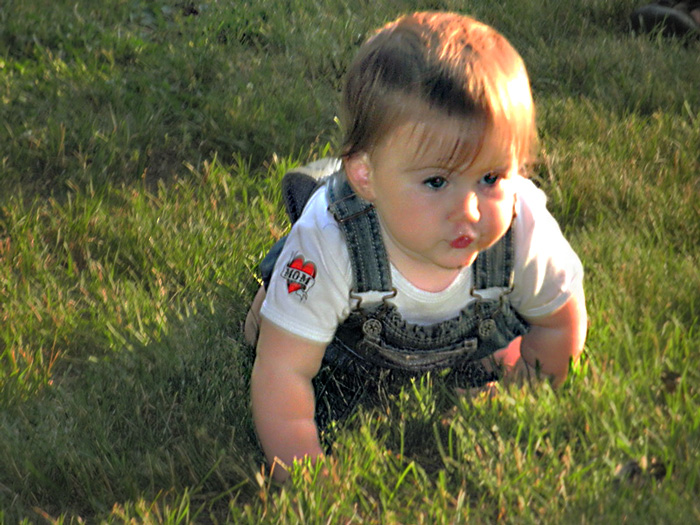Moroni
Jun 7, 2010
As the latest entry in an irregular series on places I've never been and know next to nothing about, consider this image of Moroni, capital of Comoros, an island nation in the Indian Ocean between Madagascar and Mozambique.
Jun 7, 2010
As the latest entry in an irregular series on places I've never been and know next to nothing about, consider this image of Moroni, capital of Comoros, an island nation in the Indian Ocean between Madagascar and Mozambique.
Jun 26, 2011
 Last week, baby Calla's visit back in Pennsylvania with the family included a little time on all fours out in the yard. A good time all around, according to Grandma. But on Friday, it was back to the airport for a long, long ride on a plane–back home to Zambia, in Africa.
Last week, baby Calla's visit back in Pennsylvania with the family included a little time on all fours out in the yard. A good time all around, according to Grandma. But on Friday, it was back to the airport for a long, long ride on a plane–back home to Zambia, in Africa.
Dec 21, 2011
 This species of duck is native to Africa and is ubiquitous throughout the continent, except in deserts and deep forest. It is not native but nonetheless ubiquitous in many parts of Europe, especially England, where it was introduced more than three centuries ago and has thrived in town and countryside to such an extent that it was added last year to the official national list of animal pests. This picture was taken recently in London.
This species of duck is native to Africa and is ubiquitous throughout the continent, except in deserts and deep forest. It is not native but nonetheless ubiquitous in many parts of Europe, especially England, where it was introduced more than three centuries ago and has thrived in town and countryside to such an extent that it was added last year to the official national list of animal pests. This picture was taken recently in London.
The birds are known as Egyptian Geese, despite the fact that they are ducks, not geese. Apparently, they have a heavy-looking habit of flight that makes them look goose-like in the air.
Oct 13, 2013
 Well, of course now that our American space program is shut down because of hateful people in the House of Representatives, the brand new Landsat 8 satellite that you and I paid for, which had just started phoning in dramatic new views of our planet, has gone dark. But fortunately, many other countries have legislatures that don't seem to go quite so insane over efforts to help people get medical care, and so new earth imagery from foreign satellites is still available to us.
Well, of course now that our American space program is shut down because of hateful people in the House of Representatives, the brand new Landsat 8 satellite that you and I paid for, which had just started phoning in dramatic new views of our planet, has gone dark. But fortunately, many other countries have legislatures that don't seem to go quite so insane over efforts to help people get medical care, and so new earth imagery from foreign satellites is still available to us.
This is the view from Kompsat 2, a Korean satellite, as it crossed southern Africa above the Namib Desert on the morning of October 5. What appears to be blue water is actually an ancient riverbed, almost entirely dry for millions of years; the white streaks are bone-dry salt flats.
Click to zoom in and see roads in the riverbed and some black dots that represent the only vegetation for hundreds of square miles; These desert shrubs survive on groundwater, of which there is hardly any; such as is there is, however, collects deep underneath the riverbed, below the gullies where water does trickle on those rare occasions when it rains here. Annual precipitation is less than half an inch on average, though it is supplemented a bit by coastal fog.
Note the short spur leading off the main road near the middle of the scene and ending at the base of a dune. This is the route to a parking lot at Dune 45, a thousand-foot high sand dune popular with tourists.